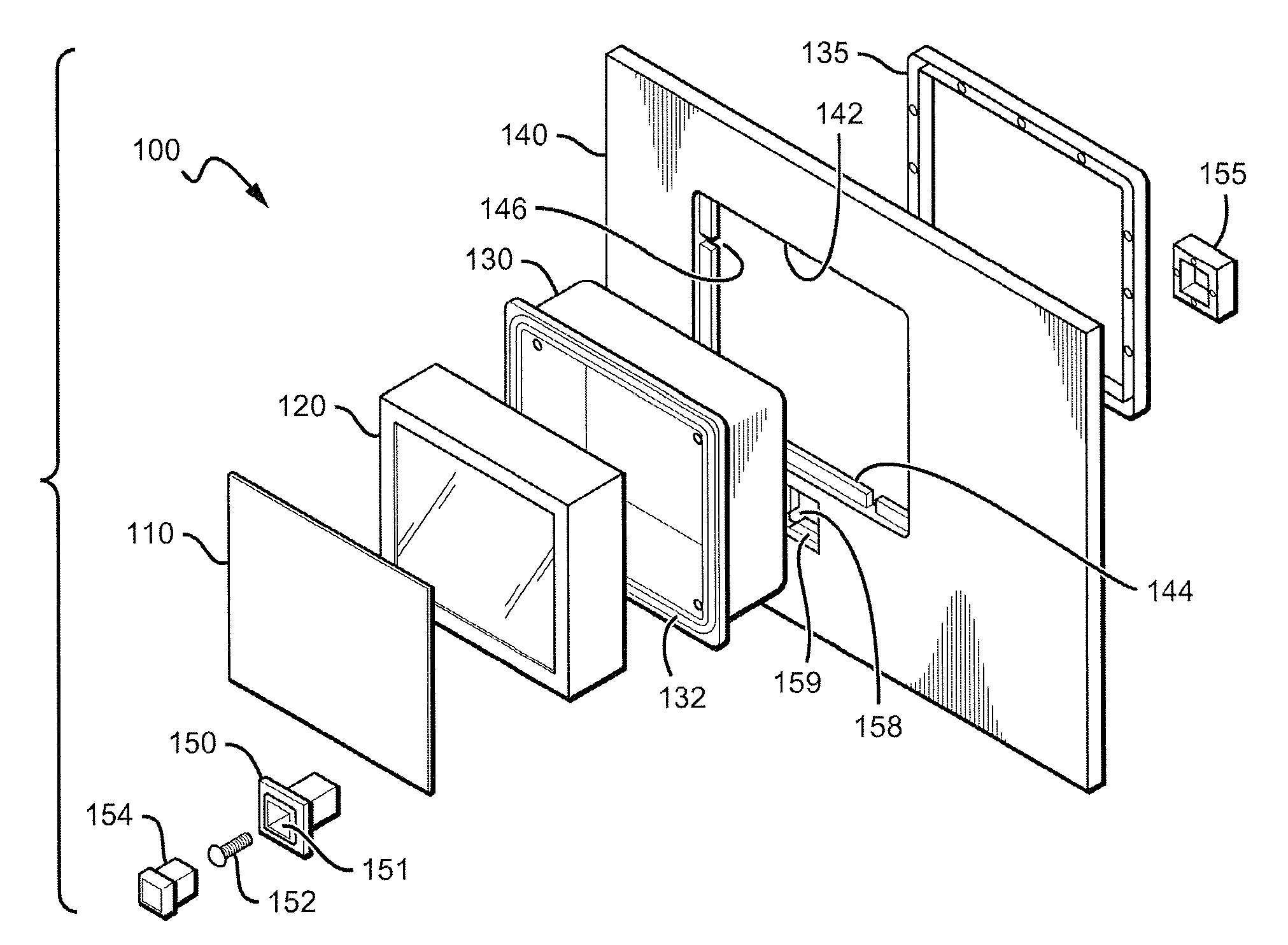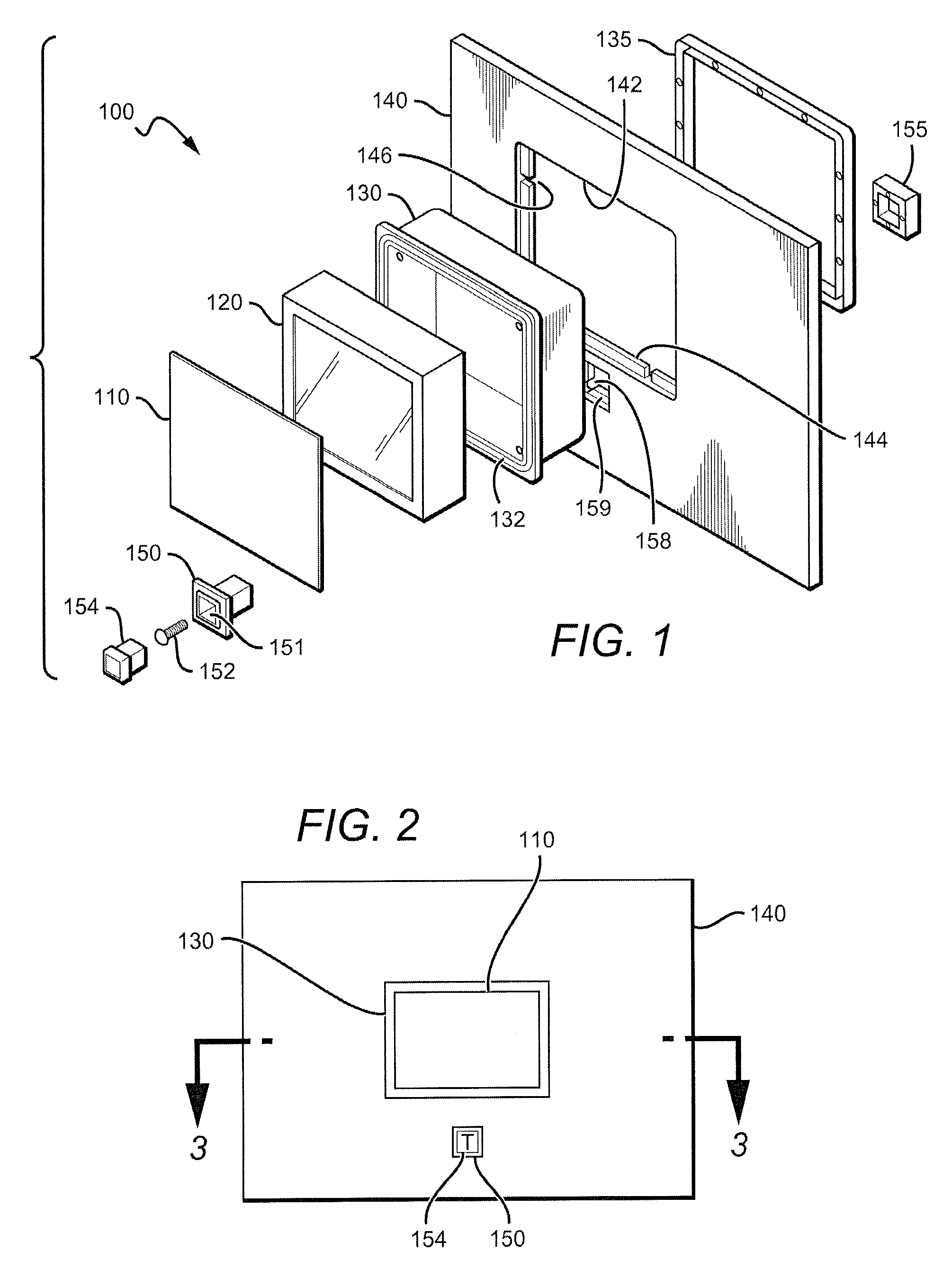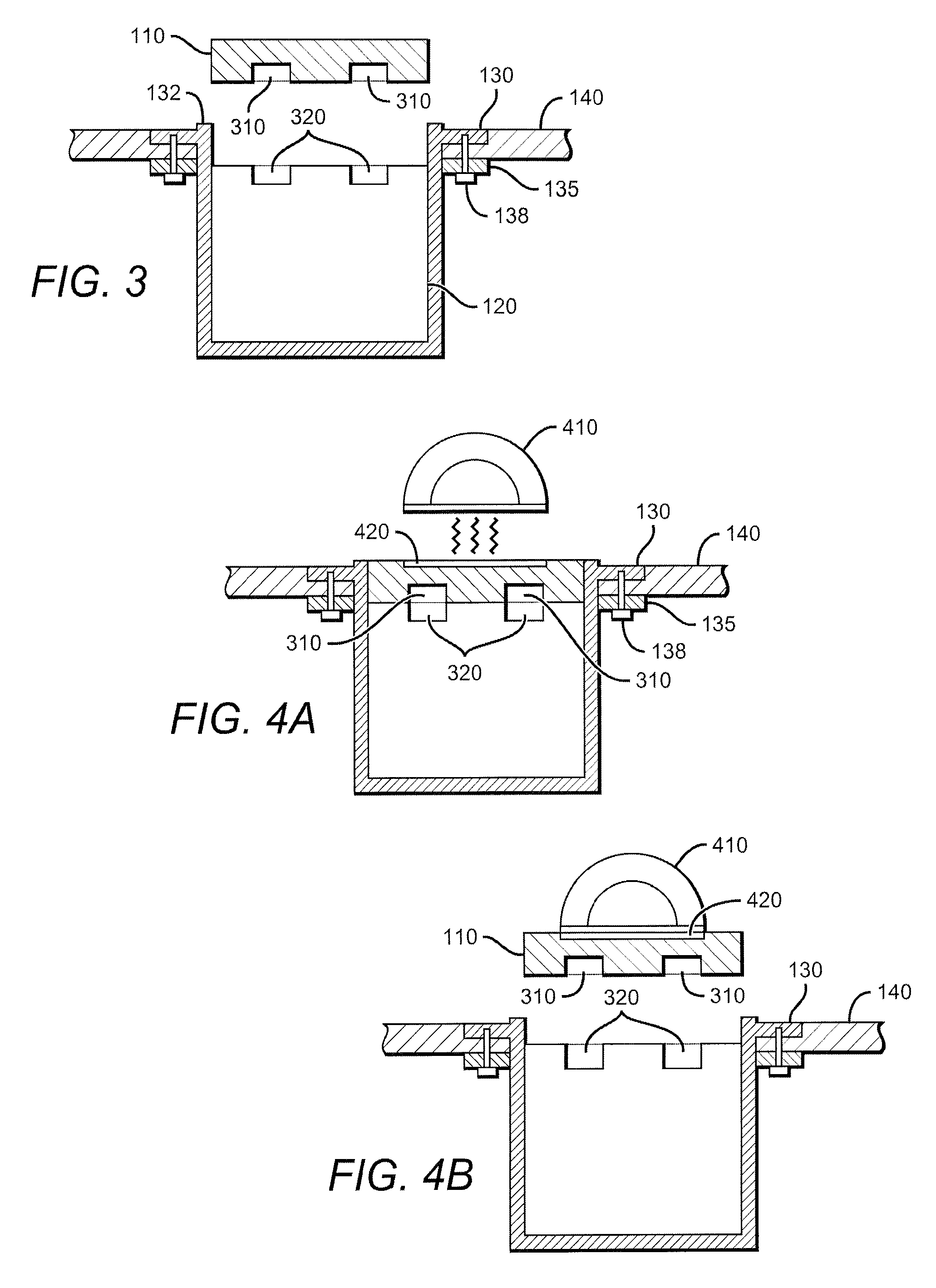Flush mounting apparatus and methods using component cover
a technology of component covers and mounting apparatus, which is applied in the direction of machine supports, building repairs, applications, etc., can solve the problems of affecting the appearance of flush mounts, allowing the component covers to be easily removed, and the wallboards generally cannot support the weight of heavy speakers over time, so as to prevent scratching and facilitate installation
- Summary
- Abstract
- Description
- Claims
- Application Information
AI Technical Summary
Benefits of technology
Problems solved by technology
Method used
Image
Examples
Embodiment Construction
[0044]In FIG. 1, a panel 140 is used to mount a component 120 to a wallboard (not shown). Generally, panel 140 has an opening 142 and recessed projections 144. Front bracket 130 and back bracket 131 clamp onto recessed projections 144, and then component 120 could be placed within the completed bracket. Lastly, component cover 110 is placed over component 120 to cover at least a portion of the front of component 120.
[0045]Panel 140 is a piece of gypsum board, wood, plastic, or other material (or combination of materials) sufficiently strong to support a speaker or other desired component between two studs of a wall, or joists or other supports in a ceiling. Where plywood is used as the panel material, for example, the panel might be as thin as ¼″ (6.31 mm), but would more preferably measure at least ½″ (12.7 mm) or ⅜″ (19.01 mm). Preferred materials include wallboard, Medium Density Fiberboard (MDF), High Density Fiberboard (MDF), Acrylonitrile Butadiene Styrene (ABS), and other mat...
PUM
 Login to View More
Login to View More Abstract
Description
Claims
Application Information
 Login to View More
Login to View More - R&D
- Intellectual Property
- Life Sciences
- Materials
- Tech Scout
- Unparalleled Data Quality
- Higher Quality Content
- 60% Fewer Hallucinations
Browse by: Latest US Patents, China's latest patents, Technical Efficacy Thesaurus, Application Domain, Technology Topic, Popular Technical Reports.
© 2025 PatSnap. All rights reserved.Legal|Privacy policy|Modern Slavery Act Transparency Statement|Sitemap|About US| Contact US: help@patsnap.com



